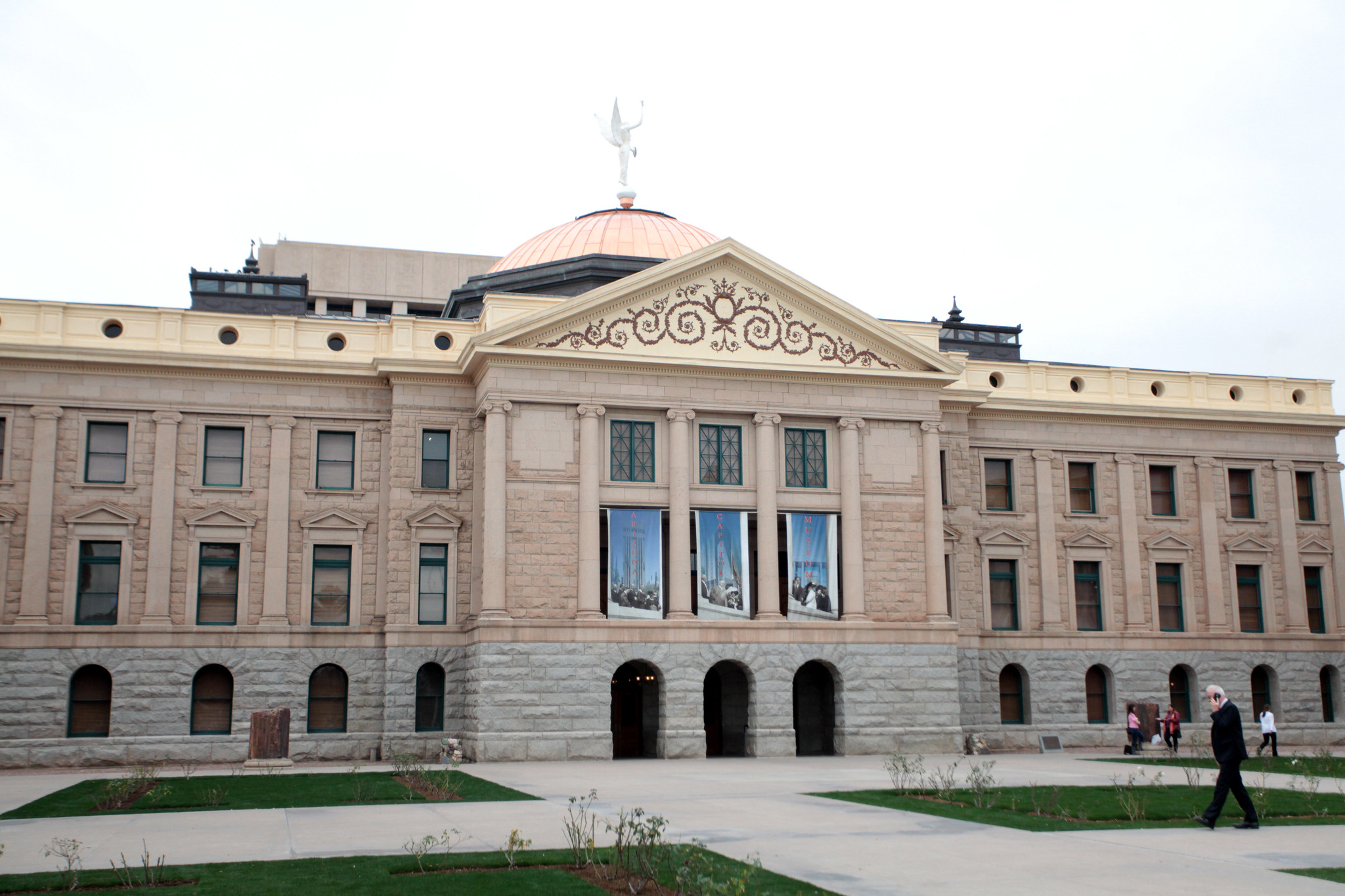Preparing for Election Night: Counting and Reporting the Vote in Battleground States
Americans will likely see misinformation surrounding the vote count. Understanding how votes are counted and reported in battleground states could help inoculate against it.

Published by The Lawfare Institute
in Cooperation With

Lawfare is partnering with the Stanford-MIT Healthy Elections Project to produce a series on election integrity in the midst of the coronavirus crisis. The Healthy Elections Project aims to assist election officials and the public as the nation confronts the challenges that the coronavirus pandemic poses for election administration. Through student-driven research, tool development, and direct services to jurisdictions, the project focuses on confronting the logistical challenges faced by states as they make rapid transitions to mail balloting and the creation of safe polling places. Read other installments in the series here.
Disinformation surrounding election night reporting of vote counts poses a unique threat to public confidence in U.S. election results. Election night reporting (ENR) refers to the real-time report of unofficial results that election officials share with the public after polls close. This year, ENR may continue several days past Election Day due to the increased use of vote-by-mail and differing timelines among states for when mail-in ballots can be counted.
The FBI and the Cybersecurity and Infrastructure Security Agency (CISA) have recently sounded multiple alarms about disinformation and interference in the 2020 U.S. election. In a Sept. 22 public service announcement, the FBI and CISA specifically flagged incomplete election results as a potential target for foreign actors seeking to undermine the legitimacy of the American democratic process. The statement urged the American public to remain aware of, and vigilant for, foreign disinformation around unofficial election results.
Experts agree that for voters to protect themselves against disinformation on election night, it is crucial to understand how ENR works. News sources like the Associated Press draw from a wide range of tools to “call” an election, and even if the vote count is not completely finished, it may be possible to call a state. However, we have seen in elections past and present that disinformation and misinformation functioning to undermine the legitimacy of the election can spread, regardless of the integrity of the election process itself. Moreover, the confusion and ambiguity around ENR and the technicalities of counting can leave voters vulnerable to false narratives that point to apparent incongruencies in the electoral process.
This happened in Cuyahoga County, Ohio, in 2004, when a conspiracy theory of voter fraud gained traction due to a discrepancy in the reported estimated voter turnout and the reported vote count. This inconsistency led some residents to conclude that fraudulent ballots were cast. In reality, the discrepancy was explained by a timing issue that came down to exactly when each figure was collected and reported. Knowing that these two figures were reported at different times could have stymied the spread of such a conspiracy.
We have broken down election night procedures in each of the battleground states to present measures that Americans can take to better prepare for the information storm to come that night. Please see the Healthy Election Project’s recent “Counting the Vote” memo for a more in-depth analysis of vote tabulation and certification processes.
Pennsylvania
Pennsylvania—a key swing state in the 2020 U.S. presidential election—has received a lot of attention related to the state’s rule that mail-in ballots cannot be processed until Election Day. Expanded vote-by-mail is a recent change for Pennsylvania (October 2019), and since then, the use of mail-in ballots in the state has increased substantially. As of October, Pennsylvania has more than 3 million requests for mail-in ballots, and more than 2 million ballots have been returned. In light of this increase, officials have voiced concerns that the short timeline to prepare for this expansion of mail-in voting will present a challenge to counting votes by election night.
Pennsylvania allows election officials to begin processing mail-in ballots when the polls open on Election Day. (At least one county has decided not to start processing mail-in ballots until the day after Election Day in order to “concentrate on the smooth operations” of polling places.) Once the polls close on election night at 8:00 p.m., individual districts will tabulate district-level Election Day ballot returns and report those returns to county tabulation centers. All polling locations must have their own Election Day results posted on location on election night, but these will not include mail-in ballots. At the same time, the county boards of election will begin “canvassing” mail-in ballots (although “pre-canvassing” will have already started at the opening of polls on Election Day, the counts can’t be reported until “canvassing” begins). Canvassing and pre-canvassing are processes that include both verifying voter identities and their right to vote as well as tabulating ballots.
The Pennsylvania Department of State’s designated ENR site will show county- and precinct-level returns as they are reported and updated by the counties. Vote counts will be reported in three categories: Election Day, mail (combination of absentee and mail-in ballots) and provisional. As mail-in ballots are canvassed, counties must submit an exported file of the updated vote counts from their election management system to the Pennsylvania Department of State daily, or as designated as needed by the Department of State, and continue to do so throughout the certification process. While it is not specified by Pennsylvania’s Department of State, in practice the ENR site can be updated “by-the-minute.” Some counties may also have their own ENR sites, as does Allegheny County.
Mail-in ballots received after Election Day and provisional ballots may also contribute to a drawn-out count in Pennsylvania. Recently, the Pennsylvania Supreme Court ruled that ballots received three days after election night may be counted, barring any reason to believe the ballot was mailed after Election Day. Additionally, military mail-in ballots may be received up to seven days after Election Day, and for that reason, the canvassing and counting of mail-in ballots must continue for at least eight days after the election. Counties are also expected to process provisional ballots and challenged ballots, determine the validity of these ballots within seven days after the election, and count those ballots determined to be valid. People might vote provisionally if, for example, they requested a mail-in ballot but still went to vote in person on Election Day and did not bring back the mail-in ballot to be discarded at the polling location. Butler County recently announced that thousands of mail-in ballots may have been lost in transit, and while the director of elections has asked voters who have not yet received their ballots to request another and drop it off directly with their office, another option for such voters is to vote provisionally on Election Day.
Of course, it is plausible that the composition of votes in the state will shift significantly as mail-in ballots are counted. A majority of the requests for mail-in ballots in Pennsylvania have come from Democrats, according to the Pennsylvania Department of State. During the primary elections in June, some candidates who appeared to be winning on election night ultimately lost to their opponents after mail-in ballots were counted in full, days later. A similar situation could occur during the general election, though news organizations have updated their methods to account for such shifts.
Florida
In contrast to Pennsylvania, Florida election officials are allowed to process mail-in ballots weeks before Election Day. In part due to an executive order issued by Florida’s governor in response to the coronavirus pandemic, election officials are allowed to begin processing mail ballots as soon as the ballots are received after Sept. 24. For the mail-in ballots received before Election Day, local election officials will verify signatures and notify voters if a signature on the voter’s ballot does not match what is on file. The unofficial tally of votes, including mail-in ballots received and counted by that point, will be released 30 minutes after the polls close on Nov. 3 in Florida.
Starting at 8:00 p.m. Eastern Time on election night, voters can check their local election website or the state election result website to view incoming results. County officials in Florida must update these uncertified results every 45 minutes. On the website, the public can view votes per candidate (which can be categorized further by vote-by-mail, early voting and Election Day results), in addition to the state results broken down by county and precinct.
If the unofficial returns contain counting errors, Florida law requires counties to correct the errors and retabulate. The Florida Department of State will then verify the tabulation and the tabulation software to check that both the results and the software used to count the results are accurate.
And should a voter’s mail-in ballot be rejected due to a missing signature or signature mismatch, voters in Florida will have until 5:00 p.m. on Nov. 5 (two days after the election) to either mail or email their cured affidavit to the county supervisor of elections. Officials then have until 12:00 noon on Nov. 7 (four days after the election) to share all unofficial results. This means that the unofficial results could change in Florida up until the fourth day after the election.
Regardless of what happens with ENR, the official results must be certified and turned in to the Florida Department of State by Nov. 15—12 days after the election. Members of the Florida Elections Canvassing Commission will once again certify all the votes and will ask county election officials to correct any errors they catch. This certification process provides the voting verification and redundancy necessary to promote trust in the election outcome in Florida.
Arizona
While people have been voting in Arizona since Oct. 7, similar to Florida, election officials are allowed to begin counting these ballots in the two weeks before Election Day. The unofficial results will be released at 8:00 p.m.on Nov. 3, which is one hour after the polls close on Election Day.
Beginning at 8:00 p.m. on election night, the office of the Arizona secretary of state will update its election results website as vote counts are reported from counties. As with all ENR, these results are unofficial as they have not yet been certified by the state’s board of supervisors or other officers in charge. In most cases, the individual counties also upload results to their own websites as pdf or text files.
While ballots cannot be counted earlier than 14 days prior to Election Day in Arizona, signature verification can begin as soon as election officials receive the ballots. Should a mismatch be detected, election officials are required to make “reasonable efforts” to contact voters and give them an opportunity to correct their signatures. Arizona voters will have until Nov. 10, the fifth business day after the election, to correct their signatures, so there is potential for these unofficial results to change slightly until then. Notably, ballots cast without a signature must be cured by 7:00 p.m. on Election Day. A pending court case could extend this deadline by five business days to match the deadline of mismatched signatures, although that case is unlikely to see resolution before Election Day.
North Carolina
In North Carolina, processing of mail-in ballots begins the fifth Tuesday prior to Election Day, and tabulation can begin two weeks before Election Day. Per North Carolina law, each county’s board of elections will meet at 5:00 p.m. at the latest on Election Day to begin the process of counting all mail-in ballots. Importantly, mail-in ballots are scanned and stored in the election management system upon receipt. Therefore, the date of tabulation does not have a significant bearing on the speed at which ballots are likely to be counted on Election Day. Counting at North Carolina precincts continues until it is completed. Notably, precinct officials from all political parties in the state must be present during this counting process.
After counting concludes at each precinct, the chief judge, or someone he or she designates, verbally announces the precinct’s unofficial results. Precinct officials must then transmit the results in an unofficial written report to the county board of elections as quickly as possible. This unofficial preliminary count includes the number of provisional ballots cast in that precinct. Immediately after the county board receives the precinct reports, the chair, secretary or a designated official will publish the unofficial results to the news media, although the law does not specify the means by which this must happen.
The North Carolina State Board of Elections (SBE) additionally will maintain an Election Results Dashboard on election night. The dashboard will show precinct report results as they are reported to the SBE and will include data in the form of maps, tables and charts. The state expects to update the dashboard every five to 10 minutes.
According to North Carolina law, the certification process will begin at the county level at 11:00 a.m. 10 days after the election to conduct the official tally (or canvass) of votes in the precincts. At the state level, the SBE will meet at 11:00 a.m. on the Tuesday three weeks after Election Day to canvass and certify the elections. Six days after these canvasses, respectively, providing there are no election protests pending, the county and state boards will issue a certificate of election. Discretionary and mandatory recounts could potentially delay the completion of the canvass in North Carolina because greater oversight is required in the canvassing process.
Michigan
Like Pennsylvania, Michigan law does not allow for significant pre-processing of mail-in ballots; the state only allows processing to begin the day prior to Election Day. While these might be conservative estimates, according to Michigan Secretary of State Jocelyn Benson, an influx of absentee voters in this election could result in “election week” rather than Election Day results, with an estimate of count completion by the Friday after Election Day. Benson emphasizes that this delay reflects local election officials “diligently taking on an increased Election Day workload to provide accurate results.” Recently, Michigan Governor Gretchen Whitmer signed a law allowing jurisdictions with more than 25,000 residents to begin processing (but not counting) absentee ballots for 10 hours on Nov. 2. Despite this change, Michigan officials are still warning that it may take many days for complete unofficial results to be tabulated across the state. Also of note, Michigan election clerks are permitted to notify voters of missing or mismatched signatures on mail-in ballot return envelopes upon receipt.
Unofficial results are reported at the state and local levels in Michigan. When ballots are tabulated and unofficial results are available, Michigan law requires unofficial results to be posted online for public consumption on completion of the unofficial count. The office of the Michigan secretary of state posts unofficial results on its election webpage. Additionally, county-level unofficial results are posted on the county websites, a list of which can be found here. Additionally, some Michigan counties use the election services vendor ElectionSource to report election results at ElectionReporting.com, which states that election results will be updated “throughout the night.”
Michigan voters are now entitled to notification of ballot rejection for mail-in ballots. Due to a recently signed law, any Michigan voter whose mail-in ballot or absentee voter application is initially rejected due to signature mismatch is now entitled to be notified of this issue by the voter’s local election office. According to recent guidance, the Michigan Bureau of Elections strongly recommends that local election offices contact a voter by phone or email, as well as by mail, on discovery of a signature mismatch to allow the voter time to correct errors. For mail-in ballots with missing or mismatched signatures, the state recommends that local election offices remind voters that they have until 8:00 p.m. on Nov. 3 to provide a valid signature to the election office.
Wisconsin
Wisconsin will begin processing mail-in ballots at 7:00 a.m. on Election Day. No ballots may be counted, however, until the polls close at 8:00 p.m. In spite of the expected increase of mail-in ballots due to the coronavirus, Wisconsin election clerks remain confident that the delivery of unofficial results will not be delayed. Some election officials purchased new machines better equipped to process the influx of mail-in ballots, while others are adjusting their absentee ballot-counting process to prepare for the influx of additional ballots.
Immediately after the polls close in the state, vote counting will proceed at polling places or central counting locations. While most localities in Wisconsin count mail-in-ballots at polling places, some localities, such as Milwaukee, process mail-in ballots at a central counting location. After tallying the votes, election officials will announce the results of the votes cast at the polling place and prepare all election materials for delivery to the municipal clerk.
Wisconsin does not have an official statewide ENR system. On election night, election inspectors must report the returns to the county clerk no later than two hours after the votes are tabulated. Election results are reported by “reporting units.” A reporting unit may comprise one ward or a group of wards. As of 2013, municipalities with a population of 35,000 or more must report election results by individual ward. Election officials do not have an ongoing requirement to continuously update local results after they are posted on election night, though most counties will update and post the results of the ballots canvassed by the county after they have been certified.
Some counties, such as Adams County, post results using a Google Drive folder linked from their county website, while others report results directly on their websites. The Wisconsin Elections Commission advises voters to refer to this list of Wisconsin County election websites on election night to find unofficial results from Wisconsin’s 72 county clerks or to look for reporting by local news outlets, which aggregate and report statewide results.
In Wisconsin, ENR is complicated by the potential for last-minute absentee ballot drop-offs. In some counties, such as Milwaukee, absentee ballot drop boxes will be open until 8:00 p.m. If a significant number of voters return their ballots on Election Day, the largest municipality may not have unofficial results ready until the early morning of Nov. 4. Election officials expect all ballots to be accounted for no later than the early morning of Nov. 4.
Summary of Key Dates and Reporting Locations
|
|
|
|
|
|
|
|
|
|
|
|
|
|
|
|
|
|
|
|
|
|
|
|
|
|
|
|
|
|
|
|
|
|
|
* Arizona starts processing ballots as soon as they are received. The processing date shown is approximately when officials begin to mail out ballots.
Source: National Conference of State Legislatures, New York Times
Conclusion
Media outlets may have all the information they need to call elections on election night, even without knowing the result of every vote. In every election to date, news organizations have called races based on incomplete results.
But Americans should be prepared to face disinformation or misinformation based on the unofficial result-reporting process. Election night reporting remains vulnerable to foreign cybercriminals or actors seeking to delegitimize the final outcome in the 2020 U.S. presidential election. By understanding states’ vote-counting processes, voters can recognize disinformation and thus help to prevent the spread of false narratives around the vote count and premature election results. The American public should know:
-
States will operate on different timeframes for counting mail-in ballots, so reporting of unofficial results will take varying amounts of time to complete across the nation.
-
There is a possibility that election results will shift after mail-in ballots are counted. Voters should pay attention to the distinction between “in-person” and “mail-in ballot” counts that many states will be using for the first time this year.
-
ENR counts are considered “unofficial,” but there is an official process for counting votes in all states that involves extensive verification measures to ensure their accuracy and integrity. These processes are more time intensive than the unofficial reporting and take longer to complete.













